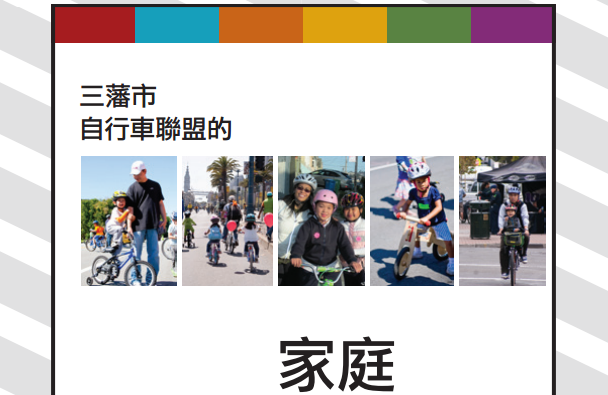
The San Francisco Bicycle Coalition's Family Biking Guide is available in English, Spanish, and Chinese.
As bicycle and pedestrian organizations work to expand the reach and diversity of their impact, it is important to understand the communities you work with and use accessible communication with non-native English speakers.
Below are the top 3 tips from each of the speakers on the Alliance’s recent Mutual Aid Call, “Multilingual Resources.”
Maria Sipin, Multicultural Communities for Mobility
- Focus on the people who you want to target, and listen more than speak. Hold forums and meetings with community members to hear their concerns and questions about issues of bicycling and gentrification.
- Put yourself in the shoes of the people you want to communicate with: try to understand what they are thinking about and what they are interested in in order to get your message through.
- Build long-term relationships instead of popping into just do one program when you have funding and then leaving when your obligations are met.
Areli Carreon, Bicitekas
- Consider not just language differences, but also the political and social contexts of the community you’re working with. For example, politics and “advocacy” in Mexico are interpreted differently than in the U.S. and we need to talk about it differently.
- Try to find someone who can work as a bridge and understand the differences between cultures.
- Spanish is spoken by a large number of people and has many country and regional difference. Use a very plain, neutral Spanish to ensure that the Spanish can be understood regardless of what regionalisms people speak. It might be helpful to check that it goes with the Spanish Academy dictionary.
Mari Lynch, Bicycling Monterey
- Share your resources with many different organizations in order to maximize your reach.
- Don’t use Google Translate: while helpful, it is often far from accurate. • Don’t only use online resource – direct outreach to people who aren’t online is very important.
Fernando Martinez, BikeTexas
- Find out about your local population and where people come from, and then hire someone (or find a volunteer) who speaks that type of Spanish.
- Be simple – don’t try to be too technical on what you want to write. Very technical English doesn’t always translate right.
- While children often speak both English and Spanish, many parents only speak Spanish. Teach Bike Safety Classes in Spanish to the parents to engage them in the program.
For more detail on the webinar, check out the recording below. If your organization is a member of the Alliance, you can also see full notes from the call in the Alliance Resource Library (members-only link).

